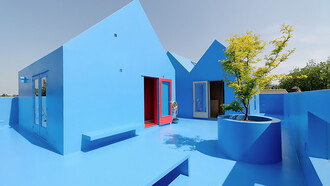Putting together packaging is described as a component of the brand and the product in marketing literature.
A product's packaging conveys information about it and serves as a representation of its features. When customers see a product on the shelves of a supermarket, they confuse it with the package.
The packaging aids the customer in the decision-making process by forming an overall impression of the product, which facilitates assessment and decision-making.
Until the product is used and the package is recycled, the product is the package. Both the product and the package get value from the package design. Design components, including typeface, colour, text, and visuals all have a significant impact on how a package looks.
Images of desirable environments (beaches, mountains, opulent homes, and cars) on the box may help arouse desires for a certain way of life. The main purpose of the package and its design at the point of sale is to attract the attention of the customer and make a statement against the other products in the shop or supermarket.
9 Effective packaging and package design are the products of the efforts and collaborations of designers, marketers, and customers. As a result, packaging plays a key role in contemporary consumer product marketing campaigns.
According to Prone (1993), the package can draw in customers, convey the name and image of the business, set the brand apart from rivals, and improve the usefulness of the product (Garber and Burke and Jones, 2000). During the purchasing process, the packaging itself serves as a crucial communication instrument and gives customers information about the product.
Product positioning is a phrase that has its roots in packaging and packaging design. Positioning acknowledges the significance of the product and the company's image and is necessary to set the product apart in the eyes of customers. Put differently, positioning helps raise consumer awareness of the package and product by contrasting it with competitors' offerings in terms of features that the brand or company name does not provide.
According to Maggard (1976), product positioning influences the marketing mix, which includes components like place, products, pricing, and promotion.
According to Ampuero and Vila (2006), these components aid in reaching consumers and helping them identify the proper product positioning in their minds. Various components of placement may be included, depending on the positioning methods. Global, international, and local consumer culture positioning are examples of this, where characteristics like performance, design, and packaging can serve a variety of purposes.
Positioning's primary objective is to effectively display and explain to customers why they should purchase a specific product.
While positioning aids in the company's proper product placement in the market, the package and packaging design strive to capture consumers' attention (Polyakova, 2013).
The visual and informative aspects are the two categories into which these elements are separated.
Visual components; color and graphics: it's critical to keep in mind that people assess packaging differently while designing a box. Consumers' perceptions of the package also rely on how the package and the individual interact. Image arrangement, colour scheme, typography, and product photography are examples of graphics.
An image is communicated by the combination of all these elements. The product's package includes graphics that provide comprehensive information about it. The information follows next, then the branding or identity of the product. Eye-catching graphics make the product stand out on the shelf and draw in customers, according to Herrington and Capella (1995). When consumers inspect packages in the supermarket, the differential perception and positioning of the graphics can be the difference between identifying and missing the product (Silayoi, 2007).
Symbols and signs colors: printed lines on the box that display various signs and symbols might have an impact on the graphics. Holograms and materials combinations can entice customers to touch the packaging, which will motivate them to sample the product (Rundh, 2009). According to Colour Cheskin (1957), choosing colours and colour combinations is an essential step in producing a high-quality design package.
Colour is an important component of design since it is typically vibrant and memorable. The colour of the package can greatly impact the consumer's ability to identify the product, understand the content it conveys, find it unique, and compare it to other brands and company names. It is possible to change the package colour without affecting the price, functionality, or qualities of the product (Garber, 2000).
Numerous color-coded messages seen in packaging applications are connected to the specific product category (Stewart, 2004). According to Garber, Hyatt, and Starr (2000) and Koch and Koch (2003), colour can affect consumers' expectations and impressions of a food product (such as its taste).
Brands or product categories may draw attention to product packaging with complementary hues. Customers who enjoy novelty may be drawn to and prefer different or novel hues. The impression that is required to influence brand and product choices is greatly influenced by the use of colour. Dimensions and form Another important consideration in package design is the size and shape of the packaging. In order to determine volume, a customer interacts with these two components; for example, people tend to believe that larger packages are elongated. The varying degrees of involvement determine the packaging sizes.
The low-involvement products are inexpensive because they require less packaging and advertising, which results in cost savings. When it's difficult to judge the product's quality, the box size has a big impact on the decision to buy. The consumer perceives the package as having greater product volume and cost effectiveness because of its elongated design and suitable size of 15.















